Sheela Bhatt in New Delhi
Defence Secretary Robert Gates's visit has underlined India need for weapons, jet fighters fitted with high-technology and a lot more. But, to get that, India will have to sign certain agreements that could be intrusive, Bedi says. Domestic failure to develop sophisticated and wide range of military equipment is compelling India to sign defence agreements which will bind New Delhi with the US for a long time to come. To strengthen Indian borders, its security and its position in the Indian Ocean, India does not have any option but to go for high-technology provided by the US and other Western countries which will come with a price tag.
What is the status of US-India defence ties?
In the last few years, the prospects of US supplies of military hardware to India have increased. We have seen recently that the Indian Air Force is placing an order to buy 10 Boeing C-17 advanced airlift aircraft for over $2.4 billion. It's the biggest-ever deal with the US surpassing the P-81 long range maritime reconnaissance aircraft order in 2009 for $2.1 billion.
The Indian Army is going to buy artillery as well for the first time in many years. The US is fast emerging as our favored weapons supplier. Since 2001, it has clinched deals of over $3.29 billion supplying India 12 Thales-Raytheon Systems AN/TPQ-37 (V) 3 Firefinder artillery radar, the USS Trenton--re-named INS Jalashwa--and six second-hand UH-3H Sea King helicopters. Six C 130 J Super Hercules military transporters have also been added to the list.
What are the Indian strategic needs and what does the US have to offer?
India wants to replace its Soviet era hardware which is in use for the last 30 year--70 percent of equipment that is in service is of Russian origin. They have reached collective obsolescence and need to be replaced.
The Indian military has embarked on a huge modernization drive. In just the next three to four years India will spend $30 billion upgrading its military hardware. By 2022, India is poised to spend another $50 billion; $80 billion is a huge amount of money. Lots of supplies will continue to be Russian because they are an old and reliable partner. For logistical reasons it's easy to replace Russian equipment with new Russian equipment. But India's advance warning capability, radar, reconnaissance and strategic capability hardware are likely be American because the US has the latest technology. Also, an implicit provision of the nuclear deal was the payback factor.
When there is a recession in US the arms industry is also affected. In view of it such Indian purchases do matter to the US. US-India military procurement ties will grow over the next 10 years. The Indian Army is quite keen to do away with the Russians because of lack of prompt after-sales service. But, due to a variety of logistic reasons, they can't. Lots of equipment in service is Russian. But India wants to diversify, and the US is a major supplier. Europe is not happy the way India is likely to court the US to get high-tech weapons. Recently, India cancelled the Spanish mid-air refuel aircraft tender.
In India we don't have enough expertise to calculate lifecycle cost. Russian equipment is cheaper to buy initially but the operating cost over the next 20 to 30 years is enormous. European and US equipment are costly when we buy, but the lifecycle cost is economical. Russian aircraft engines needs service after few hundred hours [of flight time] but many Western aircraft need service after a few thousand hours. The fact is everyone has opened the shop in India because nobody buys as India does. India is in the process of buying 197 helicopters. In 10 years time, India will need 600 helicopters. India is looking for 3,600 artillery guns worth about $12 to 14 billion.
'Russian equipment is cheap'
Image: An Indian Army Dhruv helicopter during Yudh Abhyas 09, a joint Indo-US training exercise in BabinaPhotographs: Adnan Abidi/Reuters
The navy is looking for submarines, aircraft carriers and frigates. Lots of it will come from Russia. It's competitive, it's cheap and hardy equipment suitable for Indian weather. The Indian Army uses its weapons and equipments from minus 50 to plus 50 degrees (Celsius). Soldiers are used to it. The basic platform may remain Russian for a long time. But add-ons will be Western, mainly from the US.
The radars, force multiplier, electronics equipment, and warfare for intelligence are likely to come from the US. If we agree to the end-user monitoring agreement, it will help the US to export their military hardware and software. Another agreement under debate is the Communication Inter-operability and Security Memorandum of Agreement (CISMOA). Once that happens, the transfer of US technology to India will be possible.
Till these pacts are confirmed on both sides lots of these onboard equipment like maritime surveillance aircraft, Boeing P8--also the Hercules transport aircraft that we bought from Americans--will not get confirmed. Americans are keen for Proliferation Security Initiatives. It is for the navy to check the ships on the high seas to check terrorist-related activities and nuclear related materials.
Second is the logistic support agreement, which allows reciprocal usage of each other's facilities in terms of bases and refueling. India is not happy with it. Pakistan and China would not like India to sign the PSI. They won't like their ships to be checked. It will be taken as an act of aggression.
Of course, if we agree to certain agreements like the CISMOA, the order of 126 multi role combat aircraft deal could go the US way.
The demand of 126 aircraft could be increased to 200 if it suits India. The chances of the US being successful in this deal are fairly high. The Indian Air Force is buying mid air refuelers. The Russian Sukhoi fighter jet is capable of traveling about 300 km with one fuel tank. If it has a mid air refueler, it can double or triple its reach.
Also, the Indian Navy is important for America as the Indian Ocean is going to become a zone of conflict because 60 to 70 percent of world's traffic passes through here. The US has said in many research papers that the Indian Navy could be the stabilizing agent. Without the assets of the Indian Navy, security of the Indian Ocean is difficult. The Chinese navy is expanding at tremendous speed and the rest of the world is watching. The Chinese have done a lot of 'reverse engineering' and acquired new assets. They have built a nuclear submarine and it is in the South China Sea. There is a growing muscle of the Chinese navy and it worries everybody including India. The Chinese have expanded their navy and have deployed off the Somalia coast. This is the first Chinese deployment outside the South China Sea in the last several hundred years. This is to get operational experience very far from home. The Chinese are growing in not only in assets but also in terms of operation. That is worrying the Americans and worrying the Indians a lot.
So, the Indian modernization plan is to meet China. If they meet the Chinese at some level it will take care of Pakistan. The force level required by India for China is much more while for Pakistan it's much less. To become the regional power, any country needs power projection. That comes from out of area operation and platforms to extend the long reach. The Indian Navy is operating from off the Somalian coast. It has exhibited the capability to operate out of India, far from home. It is going for mid-air tankers in a big way. India has six such refuelers from Russia. The US will provide more electronic equipment, which was so far provided by Israel.
Bureaucrats and politicians throttle procurement process
Image: A US Army soldier sits atop a Stryker, an eight-wheeled armoured combat vehicle, during Yudh Abhyas.Photographs: Adnan Abidi/Reuters
There is very little going on because of the bureaucratic freeze in decision-making. Everybody is terrified of buying because they feel that they would be taken to task if anything goes wrong. When the Congress party government came they have put 38 cases related to arms purchases and they are with the Central Bureau of Investigation. Money is being allocated but not being spent. Defence Minister A K Antony in a passionate speech last year said, 'Even though our government is earmarking huge defence budgets, it is not being fully reflected in our modernization efforts.'
India's defence outlay grew by nearly a third to $ 28.91 billion for the fiscal year 2009-2010, around 40 percent of which was for procurements. We are spending huge amount of money but we are not getting closer to modernization because there is no thinking taking place due to inefficiency. Lots of purchases are like a stock pipe operation. I agree with a view that we don't have scientific strategic thinking. January 17, Army Day, the Indian Army chief agreed that 80 percent of India's armored tanks are night blind. That means like the medieval times you fight morning to evening and take rest at night. Pakistan has 80 percent of tanks capable to fight at night.
Planning and strategic thinking of the Indian Army's procurement program is in complete shambles. Bureaucrats and politicians are throttling the procurement process. For the first time, a senior air force officer abused politicians publicly. The political party in opposition opposes the government's move; when they come to government their opposition parties oppose the purchases. It's a zero sum game. Political decision is lacking. Defence forces' equipment profile is poor.
'Nobody wants to take a decision'
Image: Indian army soldiers fire Bofors gun during a military exercisePhotographs: Rupak De Chowdhuri/Reuters
The Indian weapons procurement system takes years and years. Sometime even 20 years. The advance jet trainer that India got from the United Kingdom some five years back took 20 years to acquire. At the end of it the volume that is purchased by India is lucrative for the seller, so they stick on with patience. Currently, the trials of jet aircraft are on. It will take some six months for six participants. Then, the trial report will be assessed by the technical team. Then the short-list will be made. And, then the negotiations will start. By 2012 or 2013 the deal will be signed. After that another 54 months will pass before the actual delivery will start. That is, we will take almost five years to get the aircraft. So, the last of the 126 aircraft will be inducted in 2022! By that time it will be outdated technology. This schedule is possible only if everything goes according to the plan!
There is talk of changing the procurement system. But, it remains at the talk level. Very little is implemented and even the procedure and manual maybe modern if you read them but implementation is mired in the same old bureaucracy. Nobody wants to take a decision. Because they fear if something goes wrong they would face legal suits. Because all defence contracts are looked at suspiciously, even if it's a straight contract, people fear to take decisions. The system is such that even if someone writes a letter to defence ministry, the whole thing goes into tailspin. Then, the Central Vigilance Commission, the CBI, the Comptroller and Auditor General, the Public Accounts Committee and such organizations or committees can inquire into it.
The deal was almost through of 197 helicopters in December 2007. There is no expertise in India to see what kind of equipment is undergoing trial. One of the contenders had fielded civilian helicopters instead of military ones. So, the entire procedure of field inspection was gone through without detecting the difference between civilian and military helicopters. After four-and-a-half years of testing also, no deal was struck. Now, once again, trial for the same 197 helicopters is restarting in March. India is faced with an almost laughable situation which is turning tragic.
I will give you an example. The Indian Army is going to buy more than 200 pieces of artillery from Central Asian countries. In terms of technology, it belongs to era of the 1960s. We are buying because it's going cheap. There is such a huge gap of artillery requirements that we are even ready for an outdated product like M-146 130 millimeter guns.
'Defence preparedness was found wanting after the 26/11 attack'
Image: U.S. military personnel stand near a C130 aircraftPhotographs: Kham/Reuters
As everyone knows, defence preparedness was found wanting after the 26/11Mumbai attacks. When the war council was called after the Mumbai attacks, the air force is the only wing that is supposed to have expressed its ability to bomb targets across the Line of Control in Pakistan occupied Kashmir. The Indian Army was very hesitant because they said that if the Indian Air Force goes for this bombing then there will be reaction from Pakistan and the army may or may not be able to take care of that spread. There is a great level of insecurity and a great level of worry in the Indian armed forces. They worry that they may not be able to handle the situation because they are just not equipped enough.
General V P Malik, who was army chief during the Kargil war, and General S Padmanabhan, who was army chief when the Indian Parliament was attacked and Operation Parakram was launched, have indicated clearly that they are lacking in equipment, lacking in odernization. The Indian Army's equipment profile is very poor. This is something the Indian Army is forced to live with.
'The Indian defence industry has failed because of inefficiency and corruption'
Image: A Chinese Navy nuclear submarine takes part in an international fleet reviewPhotographs: Guang Niu/Reuters
The Indian defence establishment is always worried when American supplies goes to Pakistan but these days the defence forces are more worried about Chinese supplies to Pakistan. The Chinese are supplying frigates, warships, tanks, combat aircraft, tanks, missiles and artilleries. They are supplying the entire range of military equipment. They have robust joint development programs in all the three services. The Indian vice chief of the air staff has said that Pakistan's exports of military goods are far ahead of Indian exports. India has eight defence public sector units, 40 ordinance factories and it has the Defence Development and Research Organization which has 51 highly sophisticated laboratories and it has association with 70 academic and scientific institutions--but it has failed to produce anything of substance or comparable with US products. The Indian defence industry has failed because of inefficiency and corruption.
Is it advantageous to get closer to America when the world is shifting to a multi-polar system?
It depends on how we manage it. Some say the nuclear deal is good, some say it's a bad deal. Actually it depends on how we manage the system and work it to India's advantage.
It's nothing wrong to buy US equipment, provided India maintains its strategic neutrality and independence. India should not be drawn into US strategies in the region. If Indian leaders can do it then India should go for US equipment. The biggest roadblock is the issue of transfer of technology.
In India, foreign direct investment of up to 26 percent equity is allowed in defence production. The Indian partner will have to invest 74 percent. That means Europeans or Americans would not want to transfer their technologies in such joint ventures. Why would they lose the monopoly over technology cheap? That's why one joint venture has come up in the last six years in defence production between Mahindras and Britain's BAE Systems. Because of slow bureaucracy, Indian laws and the judicial system of India, nobody wants to have JVs. The Bofors case is going on since 1987. Slow Indian systems are a huge problem.

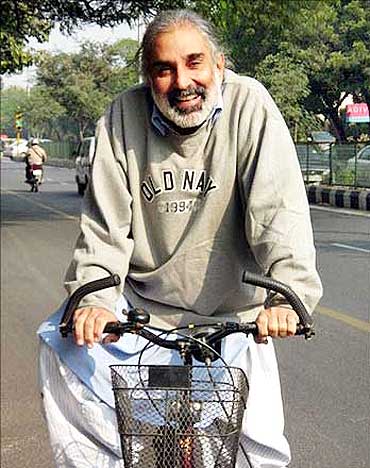
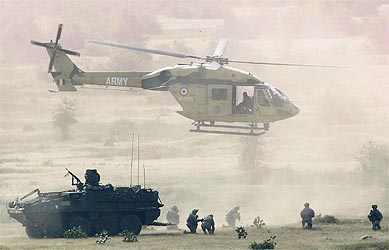
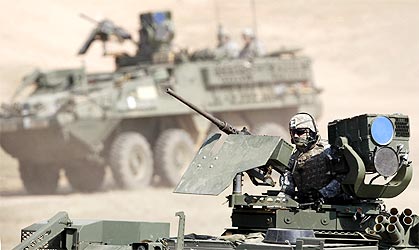
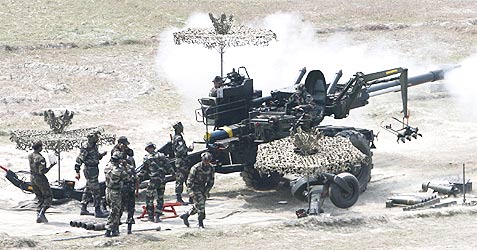
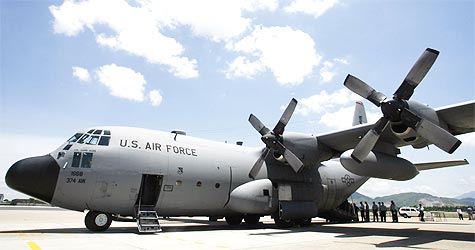
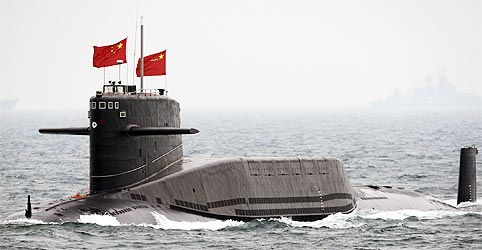
article